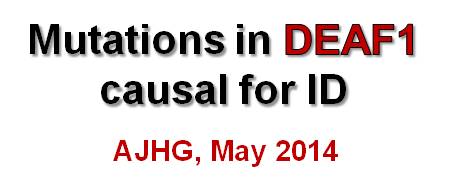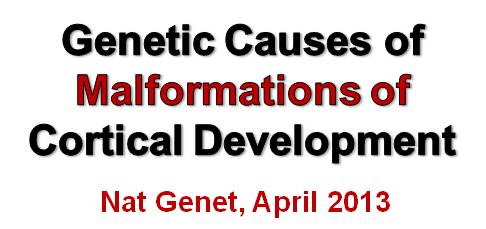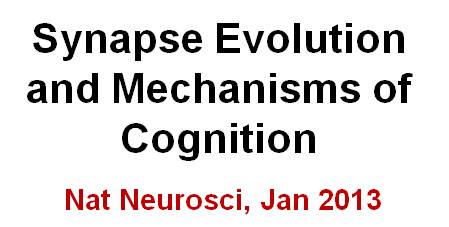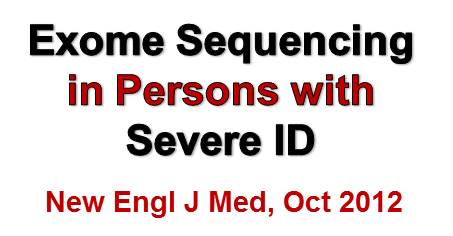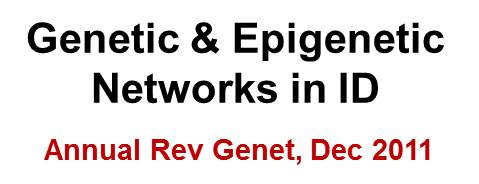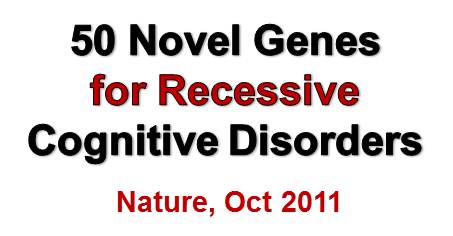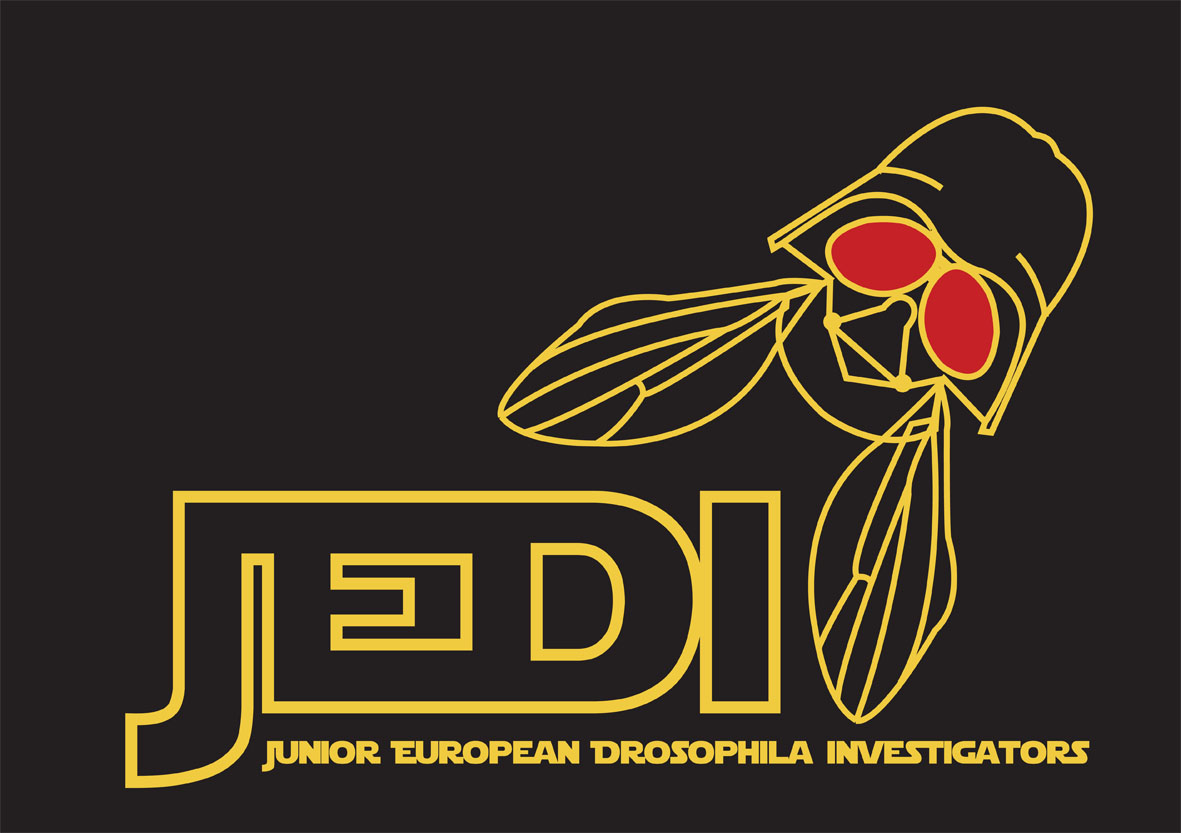For patients and their families
About GENCODYS and Cognitive disorders
Cognitive disorders (CD) compose a group of disorders in which the cognitive function of an individual is impaired. Examples are developmental delay, intellectual disability (ID) and autism. CDs are an important health problem. The estimated prevalence of ID is 2 to 3% of the population, and 85% of those cases has a mild form.
CDs can be caused by environmental factors as well as genetic factors. Genetic causes are more frequently observed in patients with a severe form of CD . For ID, for example, a definite diagnosis can only be made in about half of the patients with moderate to severe ID, and only in 20% of the mildly affected patients at the moment. Thus, for the majority of patients, a cause for CD cannot be found, which creates an enormous burden to families confronted with such a disorder. The GENCODYS consortium aims to help these families by identifying the genetic causes of cognitive disorders.
Genetic causes of CD
Background information on genetics
Each body cell contains chromosomes, which store genetic information. These genetic instructions determine our appearance and also control the development of all organs, such as the brain, heart and kidneys. Body cells usually contain 46 chromosomes, arranged as 23 pairs. One of each of these pairs is inherited from our father and the other from our mother. The first 22 pairs of chromosomes are similar in men and women (the autosomes). The 23rd pair is called the sex chromosomes. These are called XX in women and XY in men. The picture shows a cell containing chromosomes. One chromosome is enlarged and shows that it consists of DNA from which genes are made.
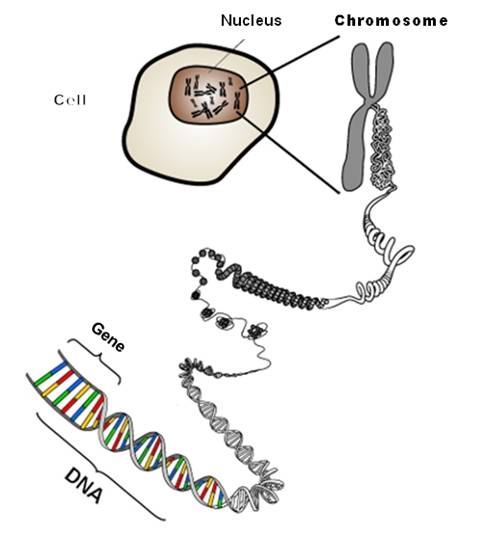
The chromosomes contain genetic instructions which are packed in the form of genes. There are about 20,000 genes in each cell. All genes have specific functions, however the function of all genes is not yet known. These genes usually come in pairs, one from each parent. A genetic condition may occur if one or more genes do not function. A non-functioning gene may occur either for the first time in a person or be inherited from one or both parents.
This may be due to a missing gene or parts of a gene or to a single alteration of one of the building stones (DNA) of a gene. Such gene alterations are also called gene mutations. Such mutations are sometimes associated with disease. It can be important to identify the DNA alteration responsible for the disease in question both for diagnosis in you and other family members.
Inheritance patterns
Genetic causes of CD can either arise newly in the patient, or can be inherited from (one of) the parents. The three most common patterns of inheritance are: X-linked inheritance, autosomal recessive inheritance and autosomal dominant inheritance. These will be discussed in more detail below.
X-linked inheritance
This means that the genetic alteration lays on the sex chromosome, the X chromosome. Women have two X chromosomes in each body cell, a man one X and one Y chromosome. Men with such a genetic alteration on the X chromosome usually have the disorder, while women are protected by the other normal X chromosome. Women with a genetic alteration on one of her X chromosomes are called carriers.
A woman passes on one of her two X chromosomes to a child (through the egg). A man passes on an X or a Y chromosome (through the sperm cell). For each pregnancy the chance that she will pass on the X chromosome with the genetic alteration is 50%. Therefore, 50% (1 out of 2) of her sons will have the disorder, and 50% (1 out of 2) of her daughters will be a carrier of the disorder.
Autosomal recessive inheritance
Each gene is present in two copies. With autosomal recessive inheritance a person will only have the disorder if both copies of a gene have a genetic alteration. Persons with only one gene with a genetic alteration and one normal functioning gene, do not have the disorder. These persons are called carriers.
Persons with an autosomal recessive disorder have inherited one copy of the gene from each parent. This means both parents are usually carriers of the disorder. For two carriers the chance that their child will have the disorder is 25% (1 out of 4).
Autosomal dominant inheritance
Each gene is present in two fold. With autosomal dominant inheritance a person will have the disorder if only one of the two copies of a gene has a genetic alteration. For each pregnancy, the chance that the child will have the disorder is 50% (1 out of 2). These genetic alterations can be inherited from one of the parents. In that case the parent is also affected with the same disorder. These alterations can also arise newly, which is often the case for CD.
Epigenetic causes of cognitive disorders
The genetic causes of CD can be related to missing genes or parts of a gene or to mutations within a gene. In addition, the causes of CD can also be related to changes in the regulation of genes. In that case the gene content (DNA) itself is not affected, but the way it is bound to other molecules is altered (epigenetics).
Although many specific genetic causes are very rare, they are thought to cause common disruptions of networks that lead to CD. The GENCODYS consortium therefore also aims to unravel these commonly disrupted networks. This should lead to first insights into the origin of CD and development of possible treatments.
What are benefits for patients?
Patients and their families can benefit from the work done by the GENCODYS consortium members in three ways:
- Using new technologies, patients and their families can be informed about the genetic cause of the cognitive disorders in their families. Knowing the cause of a cognitive disorder gives information about the future expectations. This possibly may lead to a more targeted treatment and/or guidance. This knowledge is also necessary to make reliable statements about the inheritance and the recurrence risk.
- The consortium studies the functions of genes and the mechanisms by which they can cause cognitive disorders. This will lead to a better understanding of the processes involved in the origin of CD
- Also, explanations for the clinical variability of patients with the same genetic cause are sought.
These are important first steps towards the development of treatments for patients.
What are the results so far?
All results are published in medical genetic journals, which can be found under ‘Publications’.
Two important results achieved by the GENCODYS consortium so far are:
- the identification of 50 novel candidate genes for autosomal recessive ID
- the identification of 14 novel genes for X-linked ID. In families with ID due to genetic causes on the X chromosome a diagnosis can now be made in 70-80% of the families (de Brouwer et al, personal communication)
Frequently asked questions about techniques used by the GENCODYS consortium
What is epigenetics and how does it relate to genetics?
Genetics is a field of biomedical research that focuses on the structure and function of genes, the expression of genes in the cell and the ways in which genes are inherited from parent to offspring. Epigenetics is part of this research field and addresses heritable changes in gene expression that do not result from changes in the genetic DNA sequence, but from other changes, such as methyl molecules that are attached to the DNA molecule.
What is new about whole genome analysis?
Whole genome sequencing means that the whole genome of an individual is sequenced, instead of sequencing only specific parts of the genome. In practice, this implies that researchers no longer need to determine beforehand which parts of the genome they want to sequence. This makes it much easier to find previously unknown genetic causes of diseases.
What is ‘next generation sequencing’?
DNA sequencing technologies are used to sequence (segments of) a genome. Developments in sequencing technologies have made it possible to rapidly and accurately sequence whole genomes, in a cost effective manner. The new techniques that have made this possible are referred to as ‘next generation sequencing technologies’.
Once a genetic mutation or other defect has been discovered, will it be possible to correct this and cure the disease?
No, finding the genetic cause of a disease is only the very first step towards development of a therapy. But it is a highly important step and the consortium aims to use its new knowledge on genetic causes of diseases to study possible treatments.
Do you have other questions?
EGAN is a collaboration of patient organizations involved in genetic and rare disorders and a partner in the GENCODYS consortium. For further questions, patients and their families and friends can contact EGAN via the contact form at their website or sent an email to gencodys@egan.eu.
Useful links:
Biomedinvo4all is a website developed by EGAN that is intended to serve patients and their organizations by providing information on biomedical research. Here you can find information on genetic, pharmaceutical and clinical research for the development of therapeutic, preventive and diagnostic tools.
Eurogentest is an EU project that aims at harmonizing genetic testing across Europe and has a section on the website for patients and families. Here you can find general information on genetic testing and possible questions that you can ask your doctor before taking a test.
Eurordis is a non-governmental patient-driven alliance of patient organisations and individuals active in the field of rare diseases, dedicated to improving the quality of life of all people living with rare diseases in Europe.
‘Rare disease communities’ is an online social network for patients & families to connect with one and other to support and share vital experiences on aspects of living with a rare disease. This social network is an initiative of Eurordis
Orphanet is a portal for rare diseases and orphan drugs (pharmaceutical agents to specifically treat rare medical conditions).
Genereviews is a publicly funded medical genetics information resource developed for physicians, other healthcare providers, and researchers, available at no cost to all interested persons.
Presentations patient network representatives:
At the second annual GENCODYS Consortium meeting (17-19 April 2012) there were several guest speakers representing patient networks. Their presentations can be viewed by the link below.
Patient network meeting held in Milan on 1 June 2014.
Patient network meeting held in Berlin on 1 Nov 2014.
It is our purpose to organize more such meetings in different European countries. The following meetings are planned:
-Session at our Gencodys International Conference in Crete, 27-29 April 2015
-Session in Madrid during the yearly Eurordis (European Rare Disease Umbrella Organization) Membership Meeting, 27-30 May 2015
News & Events
2nd International Gencodys Conference
27-29 April 2015, Crete, Greece
"Integrative Networks in Intellectual Disabilities"
Successfully passed!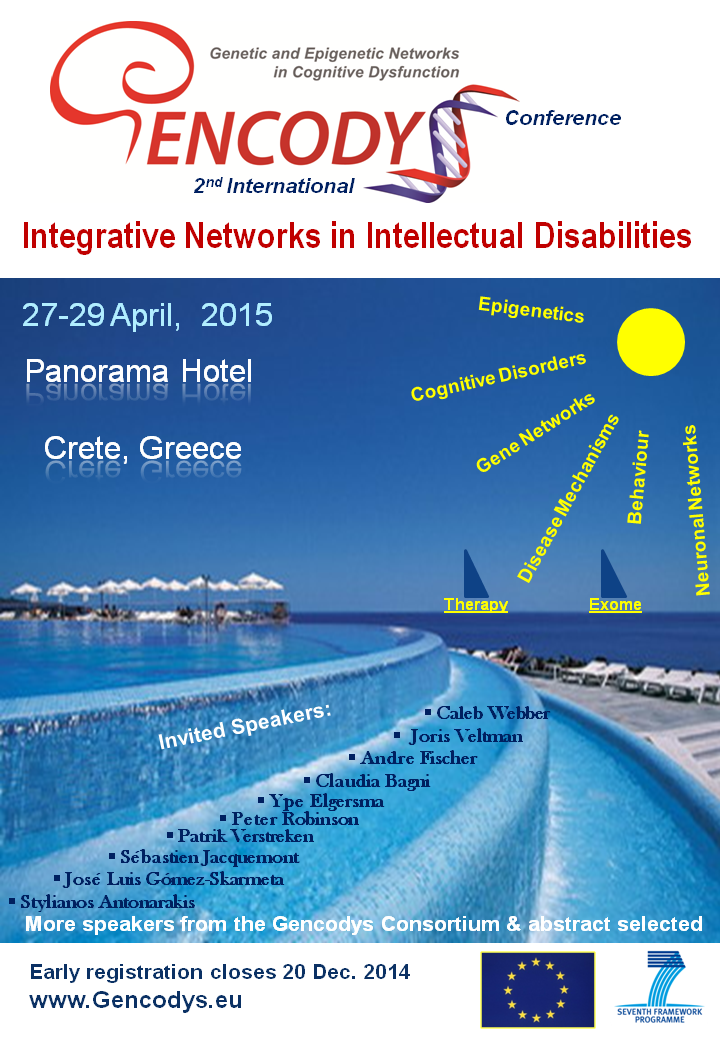
Reports of Patient Representatives Meetings:
International Conference April 2013 Successfully passed! 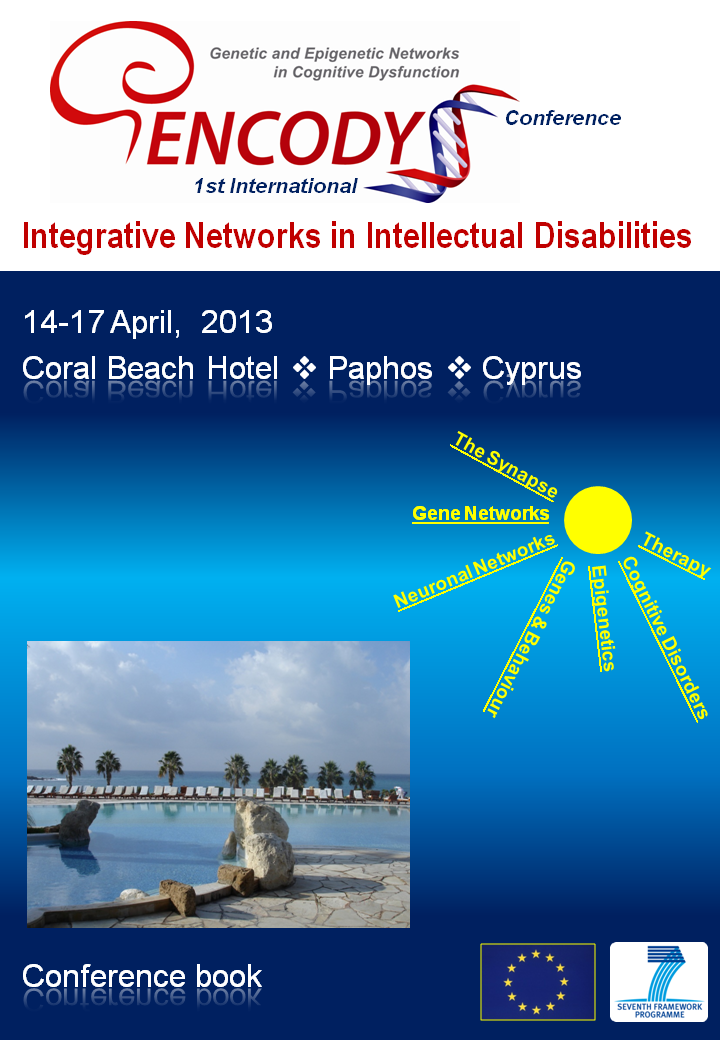
Events passed:
- Patient Representative Meeting at Eurodis Meeting, 28 May 2015, Spain
- 2nd International GENCODYS Conference, 27-29 April 2015, Crete, Greece
- Executive Board Meeting, 26 Nov 2014, Schiphol, Amsterdam
- Patient Representative Meeting (together with ACHSE), 1 Nov 2014, Berlin
- 4th Annual Consortium Meeting, 31 March - 2 April 2014, IMP, Vienna
- Executive Board Meeting, 27 Nov 2014, Schiphol, Amsterdam
- 3rd Annual Consortium Meeting, 18 April 2013, Paphos, Cyprus
- GENCODYS International Conference, 14-17 April 2013, Paphos, Cyprus
- Workshop WP3/ WP4, 5 & 6 Feb 2013, UEDIN, Edinburgh
- Executive Board Meeting, 16 Nov 2012
- 2nd Annual Consortium Meeting, 17-19 April 2012, Hotel Mercure Centre, Bordeaux
- WP1 - Euro-MRX meeting 16 April 2012, Bordeaux
- Executive Board Meeting 25 November 2011
- 1st Annual Consortium Meeting, 20 and 21 April 2011. ROME
- WP1 meeting 19 April in Rome
- Workshop WP1-WP4, 7-8 Feb 2011, Strasbourg

